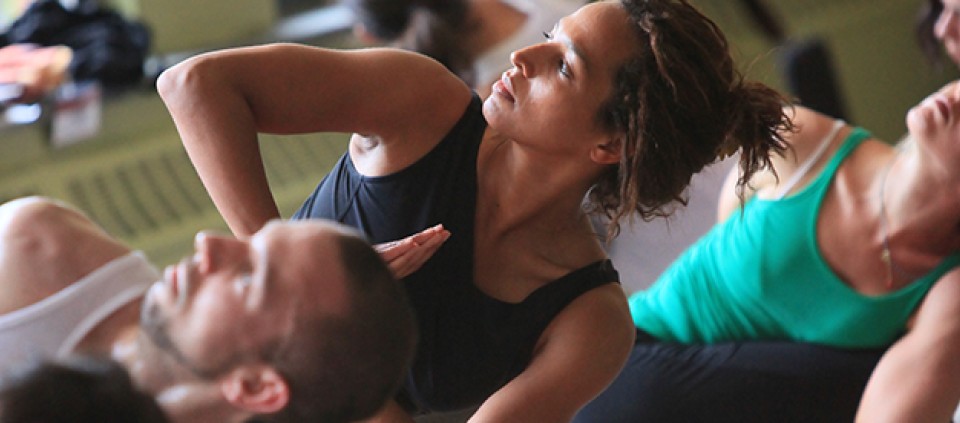Can Yoga Defeat the “Silent Killer”?

High blood pressure, or hypertension, affects one in three Americans. Known as the “silent killer” because its symptoms often go undetected for years, high blood pressure is correlated with numerous health conditions, including heart attack, stroke, and metabolic syndrome. Typically, the go-to solution is medication, but meds for high blood pressure often come with negative side effects—and they don’t address the direct correlation between stress and hypertension.
What exactly is high blood pressure, anyway?
The Center for Disease Control and Prevention defines blood pressure as “the force of blood against your artery walls as it circulates through your body.” Systolic blood pressure, or SBP (the top number) is the pressure in your blood vessels when your heart beats, while diastolic blood pressure, or DBP (the bottom number) is the pressure in the vessels between beats.
In a balanced system, blood pressure will rise and fall throughout the day, like a wave—it will naturally have its peaks and lulls. People with high blood pressure, however, get stuck on a peak—they stop experiencing as many lulls. This can harden the arteries and decrease blood flow and oxygen to the heart. As a result, the system becomes taxed, and this is where people place themselves at risk for heart attack or stroke.
Can yoga help?
The research on yoga and hypertension is encouraging, but preliminary—and brings up as many questions as answers. A number of studies have shown that yoga can reduce the signs of hypertension (including both the systolic and diastolic numbers) for both older adults (ages 55–85) and younger populations (35–55). A study that compared yoga’s effects on hypertension with that of medication found that both the yoga group and the medication group saw improved SBP, but only the yoga group saw improved DBP. In another study, yoga’s results were compared with the outcomes of a treatment known as progressive muscle relaxation (PMR); the results showed that yoga improved both SBP and DBP in African-American men and women, but the PMR improved only DBP, and only in men. Further research is underway that may help increase the understanding of how yoga helps reduce blood pressure for different populations (men versus women, high-risk versus low-risk, etc.).
Which postures work best?
While the studies varied as far as which postures were recommended and the length and frequency of practice times, a few themes emerged. In general, people with high blood pressure should be encouraged to practice slow, gentle types of yoga and veer away from more strenuous poses and flows. Gentle forward folds, such as Prasarita Padottanasana (Wide-Legged Forward Fold) and Janu Sirsasana (One-Legged Seated Forward Fold), and various supine poses, such as Setu Bandhasana (Bridge pose) and Wind-Relieving pose, appeared to be most effective. The studies also included meditation and yogic breathing techniques, such as Nadi Shodhana (Alternate-Nostril Breath).
What happens next?
Future studies are needed in order to more fully answer such questions as, Why does yoga improve outcomes of hypertension? Which poses are the most helpful to which populations? And, in a financially stressed healthcare system, can yoga provide a cost-effective alternative for the treatment and prevention of America’s silent killer?
© Kripalu Center for Yoga & Health. All rights reserved. To request permission to reprint, please e-mail editor@kripalu.org.
Angela Wilson, LMHC, RYT 500, is a Kripalu faculty member who has conducted research and written about the intersection between yoga, Western psychology, and science.
Full Bio and Programs